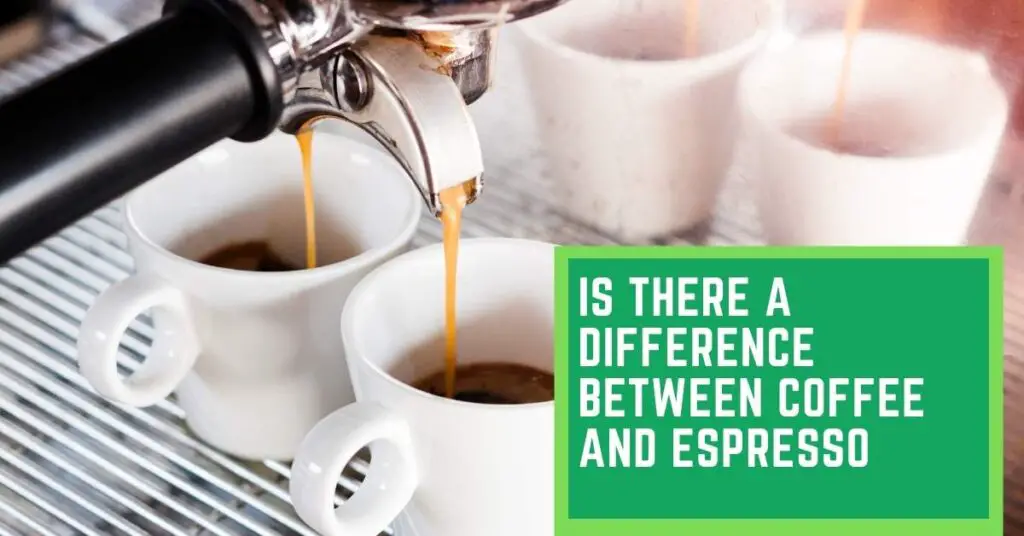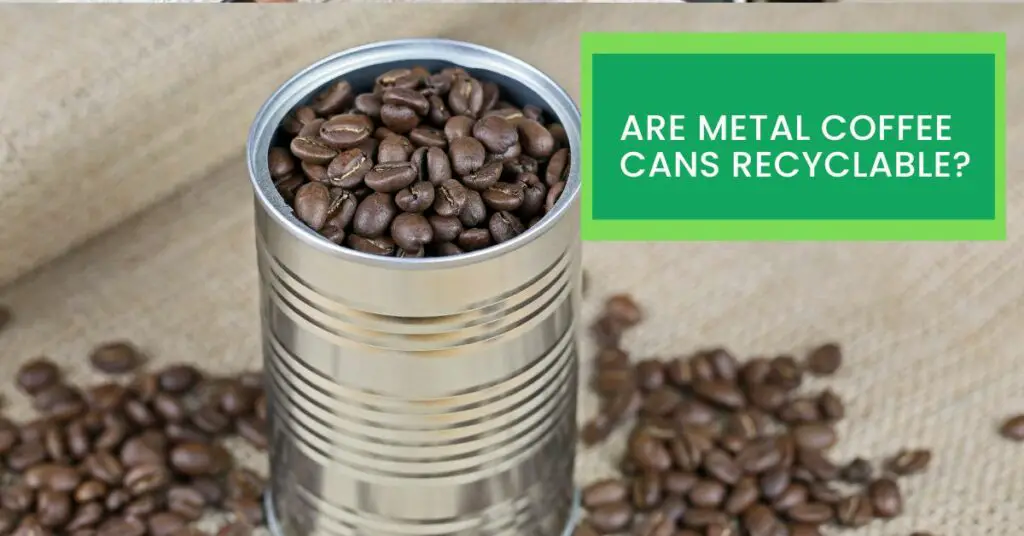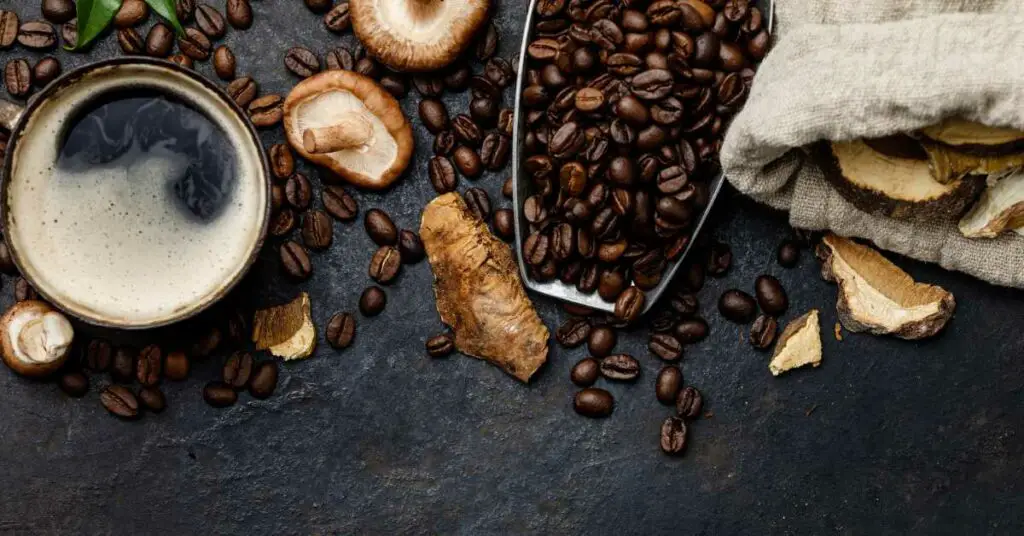Espresso is a coffee brew that is made by forcing hot water under pressure through finely-ground coffee beans. The result is a small amount of very strong coffee with a thick layer of foam on top, called crema.
On the other hand, coffee is a coffee brew that is made by brewing hot water over ground coffee beans. The result is a larger amount of weaker coffee.
So, what’s the difference between coffee and espresso? The main difference is in the grind of the beans and the brewing method. Espresso is made with a finer grind and brewed under pressure, while coffee is made with a coarser grind and brewed without pressure. This results in espresso being much stronger and more concentrated than coffee.
Espresso is also made with a higher proportion of coffee beans to water, resulting in a more intense flavour. And because espresso is made with hot water that is forced through the beans, it extracts more of the coffee’s oils and flavours, giving it a richer taste.
So, if you’re looking for a strong, rich-tasting coffee, espresso is the way to go. But if you’re looking for a weaker, more mellow-tasting coffee, then regular coffee is what you want.
What is Espresso?
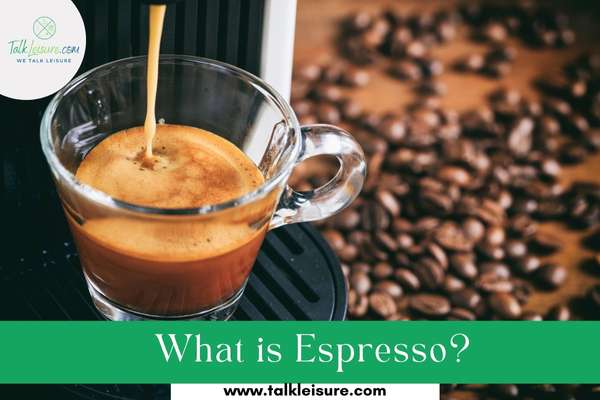
Espresso is a coffee brewed by forcing hot water under pressure through finely-ground coffee beans. Espresso is generally thicker and more concentrated than coffee brewed by other methods, has a higher level of crema, and has a distinctive flavour that is often described as “bitter”.
The first espresso machine was invented in Italy in the early 20th century, and espresso has since become one of the most popular ways to prepare coffee. In fact, many coffee bars and cafes specialize in serving espresso-based drinks.
Espresso is made by forcing hot water under high pressure through finely-ground coffee beans. This process extracts more flavour from the beans than other brewing methods, resulting in a strong, concentrated coffee.
Brewed correctly, espresso should have a thick layer of crema, or foam, on top. The crema is made up of tiny bubbles of CO2 that have been released from the coffee during the brewing process.
Espresso has a strong, distinctive flavour that is often described as being “bitter.” This bitter taste is a result of the high level of caffeine in espresso and the fact that the coffee beans used to make espresso are usually roasted for longer than other types of coffee beans.
While some people enjoy the strong flavour of espresso, others find it to be too intense. As a result, many espresso-based drinks are made with milk or cream in order to mellow out the flavours. Popular espresso-based drinks include cappuccinos, lattes, and mochas.
If you’re looking for a strong, flavorful coffee, espresso is a great choice. Just be aware that the flavour can be intense, so you may want to add milk or cream if you’re not used to drinking coffee this way.
What is Brewed Coffee?
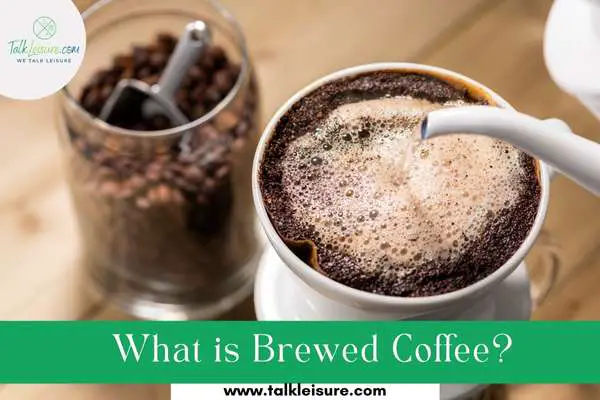
Brewed coffee is made by brewing hot water over ground coffee beans. The result is a larger amount of weaker coffee.
Brewed coffee is the most common way to prepare coffee, and it is the type of coffee that is typically served in restaurants and cafes. Brewed Coffee is made by adding hot water to ground coffee beans and letting them steep for a few minutes before filtering out the grounds.
The resulting coffee is usually weaker and less flavourful than espresso, but it can be more mellow and easier to drink. Many people add milk or cream to their brewed coffee in order to make it more palatable.
If you’re looking for a quick and easy way to make coffee, brewed coffee is the way to go. It’s also a good choice if you find espresso too strong or flavourful. Just be aware that the resulting coffee will be weaker and less flavourful than espresso.
The Difference in 05 Key Factors
01. Include Ingredients
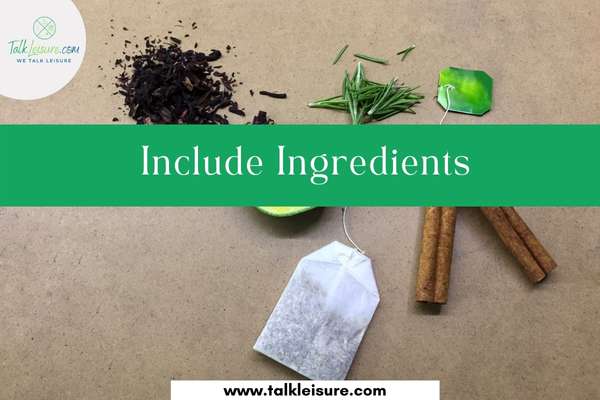
Brewed Coffee: The ingredients in brewed coffee vary depending on the recipe but typically include roasted coffee beans, water, and a filter. Some recipes also call for sugar, milk, or cream.
Vs
Espresso: There are four basic ingredients in espresso: coffee, water, pressure and heat. The ratios of these ingredients can vary depending on the desired results, but the basics remain the same. Some recipes also call for sugar, milk, or cream.
02. Brewing Process
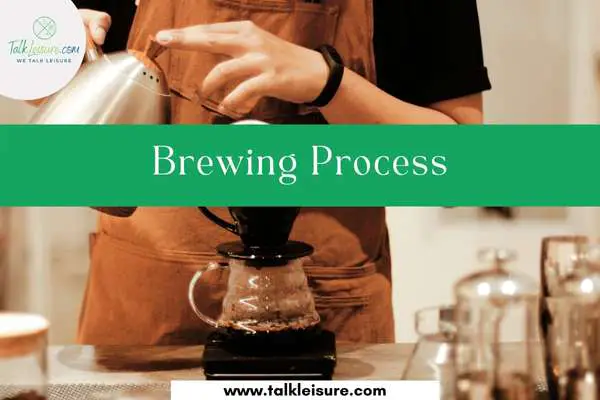
Brewed Coffee: The brewing process of brewed coffee is quite simple and only requires a few steps. First, the coffee beans are roasted and then ground. Next, hot water is added to the ground coffee and then left to steep for a few minutes. Finally, the coffee is strained and voila! You have delicious brewed coffee.
Vs
Espresso: The brewing process of espresso begins with grinding the coffee beans to a fine powder. The grounds are then placed in a metal filter basket, which is placed in the espresso machine. Hot water is then forced through the grounds at high pressure, typically around 9 bars. This forces the water to extract more flavour from the grounds, resulting in a stronger and more concentrated cup of coffee.
03. Nutrition Level

Brewed Coffee: In general, brewed coffee is a relatively low-calorie beverage and contains a modest amount of vitamins and minerals.
Coffee beans are a good source of antioxidants, which can help protect your body against disease. One cup of brewed coffee generally contains around 100 mg of caffeine, though this can vary depending on the beans used and the brewing method. Brewed coffee also contains small amounts of potassium, magnesium, and niacin (vitamin B3).
Vs
Espresso: Espresso is a very nutrient dense coffee beverage. It contains high levels of antioxidants, including polyphenols and chlorogenic acid.
Polyphenols are plant-based chemicals that have been shown to have many health benefits, including reducing the risk of chronic diseases such as heart disease and cancer. Chlorogenic acid is a phytonutrient that has been shown to improve glucose metabolism and reduce the risk of type II diabetes.
Espresso also contains moderate levels of caffeine, which has been shown to improve mental alertness and cognitive function. In addition, espresso contains beneficial nutrients such as B vitamins (including thiamin, niacin, and riboflavin) and minerals (such as magnesium and potassium).
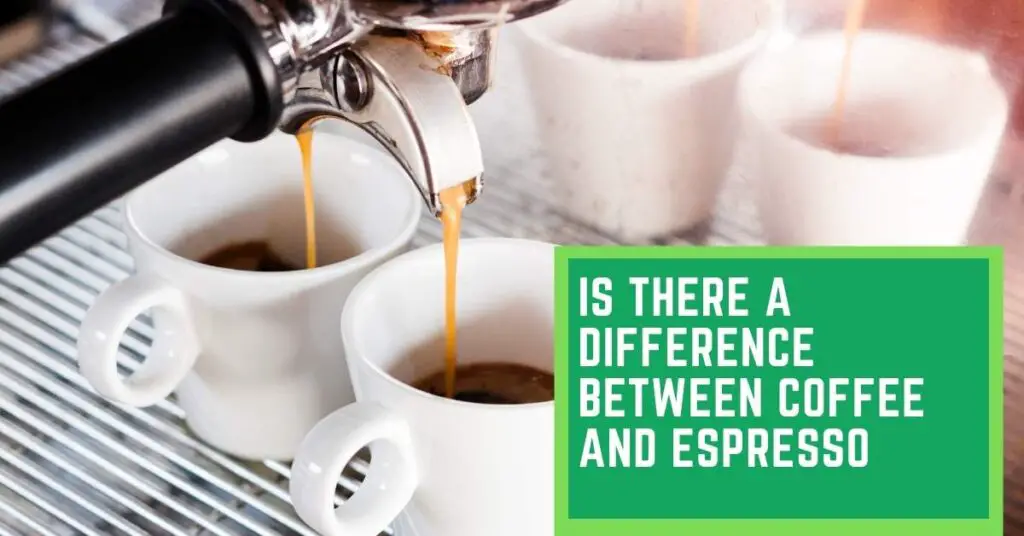
04. Unique Texture
Brewed Coffee: Brewed coffee has a unique texture that is both smooth and rich. This is due to the way the beans are roasted and then brewed. The roasting process brings out the natural oils in the beans, which give the coffee its unique texture.
Brewing the coffee correctly also plays a role in creating a smoother, richer cup of coffee. When brewing, be sure to use fresh, cold water and a quality filter. These two simple things can make all the difference in texture!
Vs
Espresso: The unique texture of espresso is a direct result of the high pressure with which it is brewed.
The filter baskets used in espresso machines have very small holes, which means the water is forced through the coffee grounds at high pressure. This produces a very thick and rich coffee with a lot of crema on top.
Some people also like to use a shorter brewing time with espresso to produce an even thicker and more intense coffee. And unlike regular coffee, espresso should not be diluted with milk or cream. It should be enjoyed straight, black, and strong.
05. Unique Taste

Brewed Coffee: Brewed coffee has a unique taste that can be quite intense and rich.
This is because it is made by steeping ground coffee beans in hot water, which extracts all of the flavorful compounds from the beans. The longer the coffee is brewed, the more intense the flavour will be. Additionally, brewing with fresh, quality coffee beans will also result in a tastier cup of coffee.
Vs
Espresso: The unique taste of espresso is achieved through a combination of factors, including the type of coffee bean used, the grind of the beans, the brewing method, and more. Espresso is typically made with Arabica coffee beans, which are known for their rich flavour. The beans are also ground very fine in order to extract as much flavour as possible.
Caffeine Level of Espresso & Brewed Coffee
Espresso has a higher caffeine level than regular brewed coffee because it is made with more concentrated coffee grounds. A single shot of espresso usually contains around 70 milligrams of caffeine, while a standard cup of drip coffee usually has around 95 milligrams.
Caffeine levels can also vary depending on the particular blend of coffee beans and the brewing method used. For example, French press coffee tends to have a bit more caffeine than drip coffee because the grounds are steeped in hot water.
Calorie Level of Espresso & Brewed Coffee
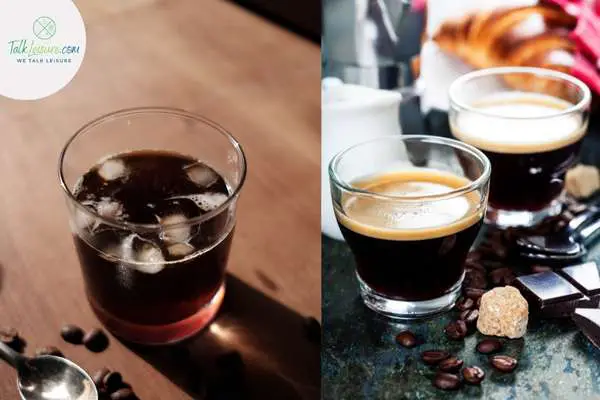
Brewed coffee has a lower calorie level than espresso. Brewed coffee is around 2 calories per ounce, while espresso is around 4.5 calories per ounce. This is because espresso is made with more concentrated coffee and less water.
However, this calorie level will vary depending on a number of factors, including the type and brand of coffee beans used, the brewing method, and how the final coffee is prepared (e.g. with milk or sugar).
Visual Explanations
i. Difference between coffee & espresso:
Related Matters
01. Is espresso just stronger coffee?
Espresso is not just stronger coffee. It is coffee that has been brewed under high pressure and then served in a small cup.
The high-pressure brewing process creates a thicker, creamier foam on top and a fuller-bodied, slightly sweeter flavour than regular drip coffee. Espresso is also higher in caffeine than regular coffee.
02. Can you use regular coffee for espresso?
Yes, you can use regular coffee for espresso. You need an espresso machine.
Espresso is made by forcing very hot water through finely-ground coffee beans. The high pressure of the water forces the coffee out of the beans in a much shorter time than with regular brewed coffee. This produces a very concentrated, very strong cup of coffee – and espresso.
To make espresso using regular coffee, you need to grind your coffee beans a little bit finer than you would for regular brewed coffee. You can also use a stronger roast since you’ll be brewing it for a shorter amount of time.
03. Why can I drink espresso but not coffee?
Espresso is made with a finer grind than coffee, and it’s extracted under greater pressure, which gives it a more intense flavour.
Some people find that they don’t like the flavour of coffee because it’s too bitter or acidic. Espresso is less bitter and acidic than regular coffee, so it may be a better option for people who don’t enjoy the taste of coffee.
04. What’s the strongest coffee in the world?
Kopi Luwak coffee is reputed to be the world’s strongest coffee. It is made from the droppings of civet cats, which eat only the ripest coffee cherries.
The enzymes in their digestive system break down the protein in the cherry, making for a more concentrated beam. Kopi Luwak beans are consequently one of the most expensive coffees in the world.
05. Does Starbucks use espresso or coffee?
In short, Starbucks uses coffee in their drinks – espresso is just a type of coffee. Espresso is made by brewing ground coffee beans very finely under high pressure, resulting in a strong, concentrated brew.
While Starbucks does occasionally offer speciality drinks made with espresso, their more common beverages like Frappuccinos and Lattes are made with regular coffee.
Coffee is one of the most popular drinks in the world and has been enjoyed for centuries. It’s no surprise that Starbucks has built their menu around this beloved beverage.
From brewed coffees to elaborate Frappuccinos and Lattes, there’s something for everyone at Starbucks. With such a wide variety of drinks on offer, knowing which one to order can be confusing.

